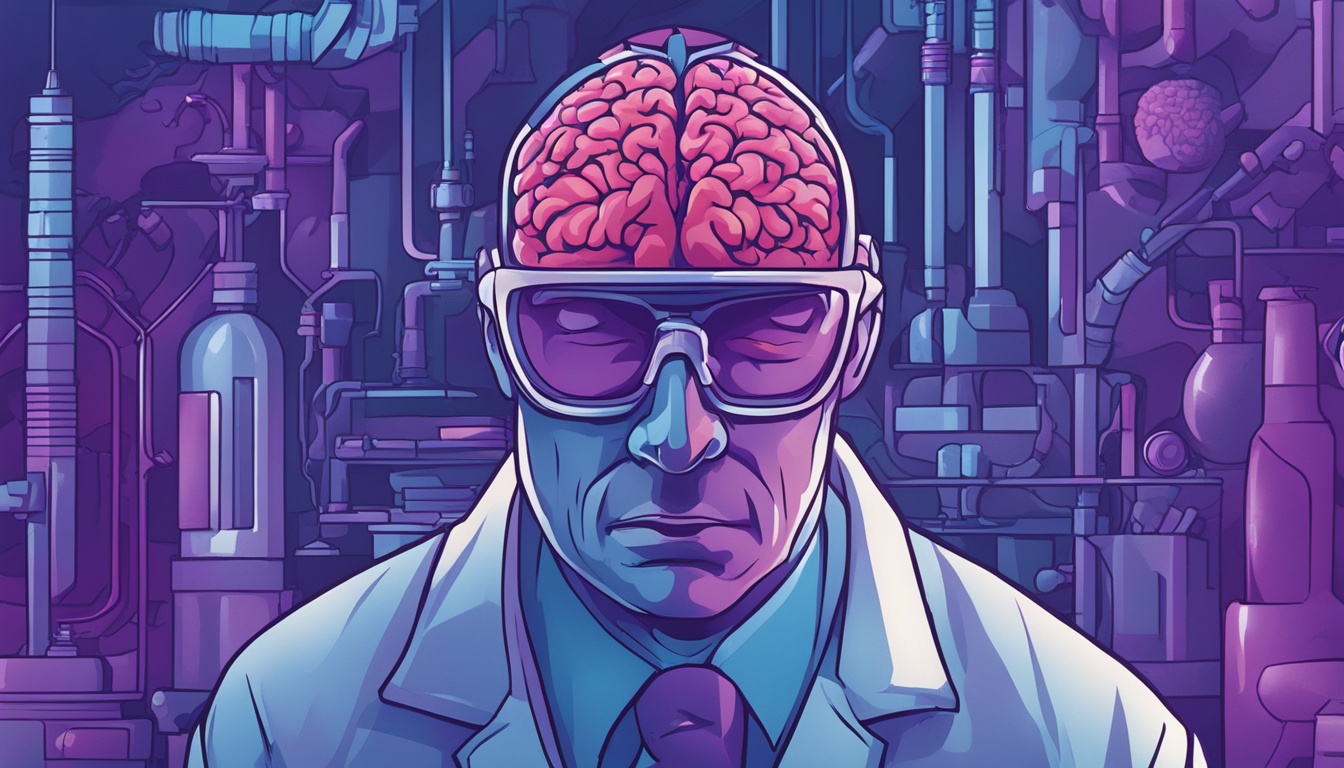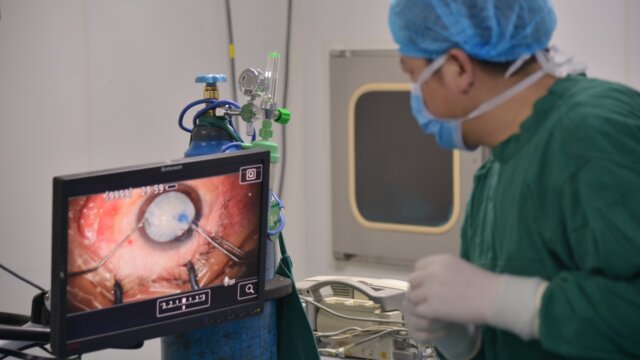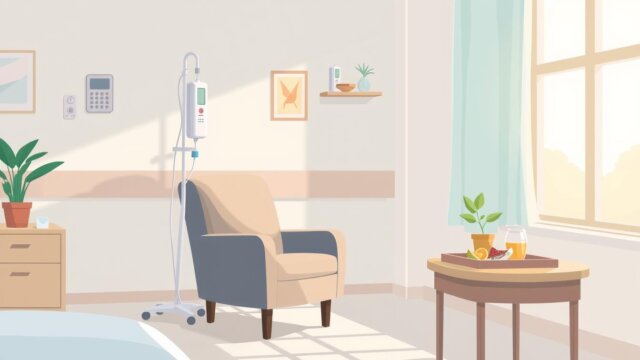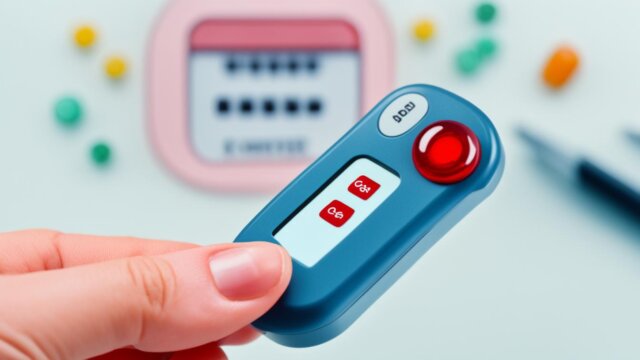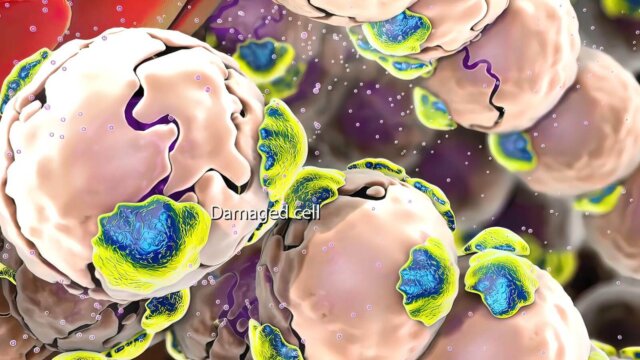FTC disclaimer: This post may contains affiliate links and we will be compensated if you click on a link and make a purchase.
Imagine your body’s balance of blood sugar levels getting out of whack. This can lead to a serious health crisis. It’s a big problem for millions of people with diabetes and some without it.
Hypoglycemia is a serious issue that needs quick action and the right care. Knowing what causes it, what symptoms to watch for, and how to treat it helps you keep your blood sugar in check. This keeps you healthy.
Key Takeaways
- Hypoglycemia, or low blood sugar, is a serious condition that can have severe, even life-threatening consequences if left untreated.
- Symptoms of hypoglycemia can vary widely from person to person, and some individuals may experience hypoglycemia unawareness, increasing the risk of severe episodes.
- Common causes of hypoglycemia in people with diabetes include insulin imbalances, incorrect dosages, and inappropriate timing of meals.
- Hypoglycemia can also occur in individuals without diabetes due to various medical conditions, medications, or lifestyle factors.
- Proper management of hypoglycemia, including identifying the underlying cause and implementing effective treatment strategies, is crucial for maintaining good health and preventing complications.
What is Hypoglycemia?
Hypoglycemia means your blood sugar is too low. It’s the main energy source for your body. If it gets too low, you might feel bad or even get into danger. Normal blood sugar is between 70 and 99 mg/dL. If it goes below 70 mg/dL, you have hypoglycemia. If it drops below 54 mg/dL, it can cause seizures, coma, or even death.
Understanding Low Blood Sugar Levels
It’s key to know the difference between hypoglycemia (low blood sugar) and hyperglycemia (high blood sugar). Hyperglycemia means your blood sugar is too high, often from not enough insulin or not responding well to insulin in people with diabetes. Hypoglycemia is when your blood sugar gets too low, which can happen to anyone, not just people with diabetes. Both need quick action and the right care to stay healthy and avoid problems.
Hypoglycemia vs. Hyperglycemia
Hypoglycemia is when your blood sugar is low, and hyperglycemia is when it’s high. Both can be serious if not treated right, but they need different ways to manage them. Knowing the difference is key for people with diabetes or at risk of glucose imbalance, insulin reaction, diabetic emergency, sugar level drop, hypoglycemic episode, hypoglycemia symptoms, low blood glucose, and glucose deficiency.
Symptoms of Hypoglycemia
It’s key to spot hypoglycemia symptoms early to act fast. These signs tell your body you need to fix your low blood glucose levels. Don’t ignore them, as they warn of a glucose deficiency that needs quick action.
Early Warning Signs
Early hypoglycemia signs include shakiness, sweating, and feeling weak. You might also feel hungry, dizzy, confused, or have a fast heartbeat. These signs show your blood glucose is too low, below 70 mg/dL.
Severe Hypoglycemia Symptoms
Severe hypoglycemia can lead to serious issues. Symptoms like seizures, coma, and not responding can happen. These need quick medical help to avoid harm to your organs, brain, or even death. In such cases, glucagon treatment might be needed to quickly fix your blood sugar.
Some people might not feel the usual signs of low blood glucose due to hypoglycemia unawareness. Using a continuous glucose monitor (CGM) can help. It alerts you when your blood glucose is low, so you can act fast.
Symptom | Severity | Action Required |
|---|---|---|
Shakiness, sweating, weakness, hunger, dizziness, confusion, rapid heartbeat | Early warning signs | Raise blood glucose levels promptly |
Seizures, coma, unresponsiveness | Severe | Immediate medical attention, glucagon treatment |
Knowing and acting on hypoglycemia symptoms is key to managing low blood glucose. Being alert to early signs and severe reactions helps you take the right steps. This keeps you safe and healthy.
Causes of Hypoglycemia in People with Diabetes
For people with diabetes, low blood sugar often comes from not balancing insulin, food, and activity. Those with type 1 diabetes who use insulin are at risk. Type 2 diabetes patients on insulin and some meds can also get low blood sugar. Over time, type 2 diabetes patients face more hypoglycemia.
Insulin Imbalance
Insulin helps control blood sugar. People with diabetes use insulin shots or pills. Too much insulin or not enough food or exercise can cause low blood sugar.
Dietary and Exercise Factors
Eating habits and exercise can lead to low blood sugar in diabetes patients. Skipping meals, eating too few carbs, or not planning workouts can upset blood sugar balance. Keeping an eye on blood sugar, adjusting insulin, and planning meals and exercise helps prevent low blood sugar.
In short, insulin imbalance and diet and exercise play big roles in low blood sugar in diabetes. Knowing these causes helps people with diabetes manage their condition better and avoid low blood sugar.
Hypoglycemia in Pregnancy
Hypoglycemia, or low blood sugar, is a big worry for women with diabetes during pregnancy. Pregnancy’s hormonal shifts and increased insulin sensitivity make it hard to keep blood sugar stable. Women with diabetes, type 1 or type 2, often face low blood sugar, especially early on.
It’s key to watch your blood sugar closely, tweak your meds and diet, and work with your healthcare team to handle hypoglycemia. A study found 23 percent of women with type 1 diabetes had severe low blood sugar during pregnancy. Another study showed 19 to 44 percent of pregnant women with diabetes had hypoglycemia.
Women with type 1 diabetes had more severe low blood sugar early in pregnancy than before. The risk of a severe attack peaks between 8 and 16 weeks of pregnancy. Hypoglycemia hits harder in pregnant women with diabetes than those without.
If you have diabetes, you might need to adjust your meds to keep blood sugar stable during pregnancy to avoid low blood sugar.
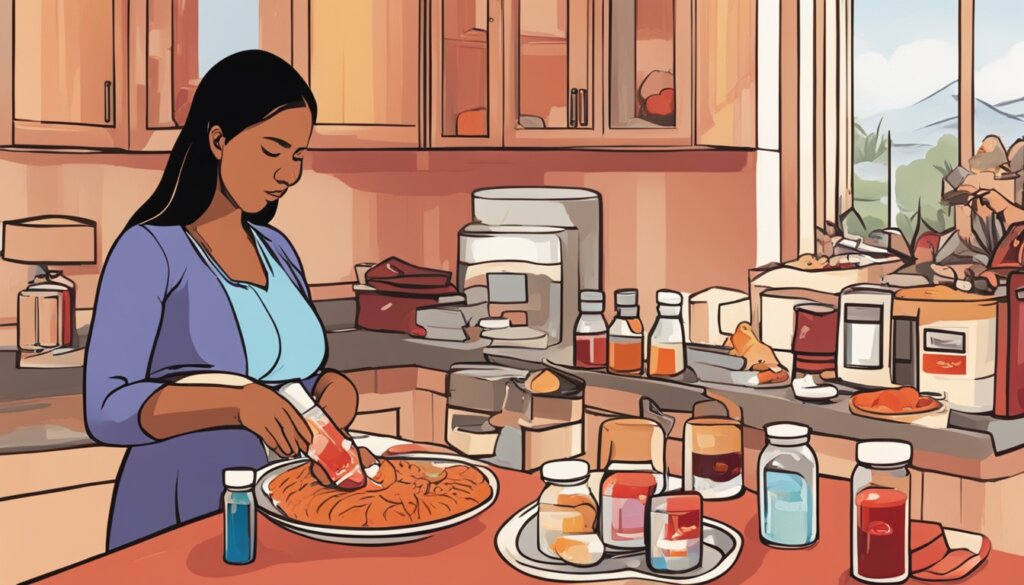
Keeping blood sugar stable is key for the health of both mom and baby during pregnancy.
To tackle hypoglycemia in pregnancy, your healthcare team might suggest:
- Checking your blood sugar often
- Changing your diabetes meds
- Eating more, but smaller meals with carbs, proteins, and healthy fats
- Drinking 8-10 glasses of water a day
- Having quick carbs on hand for when you need them
By teaming up with your healthcare team, you can handle diabetes and hypoglycemia in pregnancy well. This ensures the best outcomes for you and your baby.
“Managing blood sugar levels is crucial for the health of both the mother and baby during pregnancy.”
Nocturnal Hypoglycemia
Hypoglycemia, or low blood sugar, can happen at night too. This is called nocturnal hypoglycemia. It can be caused by the body making less insulin while you sleep, being active earlier in the day, or taking insulin at the wrong time.
Signs of low blood sugar at night include trouble sleeping, sweating, bad dreams, and feeling lost or confused when you wake up. It’s important for people with diabetes to check their blood sugar levels at night, adjust their insulin, and know the signs of low blood sugar to stay healthy.
Causes of Low Blood Sugar during Sleep
Many things can cause low blood sugar at night. A study in 2017 found that most severe low blood sugar events happen while sleeping. Being older, a woman, or having diabetes for a long time can make you more likely to have low blood sugar at night, says a 2021 review.
Other reasons for low blood sugar at night include not eating, being active before bed, drinking alcohol before sleeping, or having an infection. To avoid low blood sugar at night, it’s good to keep your blood sugar above 108 mg/dL before sleeping.
Using continuous glucose monitoring systems can help stop low blood sugar at night by alerting you if your levels get too low. Eating a small snack before bed can also help keep your blood sugar stable and prevent low levels.
Managing your medicines, like changing your insulin dose, can also stop low blood sugar at night. Drinking less alcohol, especially before bed, is also a good idea to lower the risk of low blood sugar for people with diabetes.
“Nocturnal hypoglycemia can affect people who skip meals, exercise before bedtime, drink alcohol before bedtime, or have infections, highlighting potential risk factors for this condition.”
| Key Findings on Nocturnal Hypoglycemia |
|---|
| – More than half of all severe hypoglycemic events occur during sleep |
| – Older age, being female, and longer duration of diabetes may increase the risk |
| – Nocturnal hypoglycemia can lead to symptoms like sweating, headaches, and nightmares |
| – Maintaining blood sugar above 108 mg/dL before bed can help prevent nighttime hypoglycemia |
| – Continuous glucose monitoring and bedtime snacks can aid in managing nocturnal hypoglycemia |
Causes of Non-Diabetic Hypoglycemia
Hypoglycemia, or low blood sugar, is not just for people with diabetes. It can happen to anyone. There are two main types: reactive and fasting hypoglycemia.
Reactive Hypoglycemia
Reactive hypoglycemia happens when blood sugar drops suddenly after eating. This can be because of a quick rise and then fall in blood sugar, often from eating simple carbs. It can also happen after some weight loss surgeries, like gastric bypass. In these cases, the body absorbs sugars too fast, causing a big insulin reaction.
Fasting Hypoglycemia
Fasting hypoglycemia is when blood sugar drops when you haven’t eaten for a long time. Most people can handle fasting well, but some health issues can cause problems. Drinking too much alcohol, being very sick, adrenal problems, or rare tumors that make insulin can lead to this. It’s important to find and treat the cause to manage this kind of low blood sugar.
Cause | Description |
|---|---|
Reactive Hypoglycemia | Sudden drop in blood sugar levels after a meal, often due to rapid spike and fall in blood sugar levels triggered by simple carbohydrates. Can also be a complication of bariatric surgery. |
Fasting Hypoglycemia | Drop in blood sugar levels due to prolonged periods without food, often caused by excessive alcohol consumption, critical illnesses, adrenal insufficiency, or rare tumors producing excess insulin-like substances. |

It’s key to know why non-diabetic hypoglycemia happens to manage it well. By finding the cause, people can stop and treat these low blood sugar episodes.
Medications and Conditions Linked to Hypoglycemia
Many medications and health issues can cause hypoglycemia, even if you don’t have diabetes. Some drugs like quinine, beta-blockers, and certain antibiotics can mess with how your body handles sugar. Serious illnesses like liver disease, kidney failure, severe infections, and heart disease can also lead to hypoglycemia by making it hard for your body to control blood sugar levels.
Drugs that often cause hypoglycemia include sulfonylureas, insulin, metformin, and others. In adults, these medications are a top reason for hypoglycemia, along with drinking too much alcohol. Beta-blockers, SSRIs, quinidine, NSAIDs, and some antibiotics can also cause low blood sugar. In fact, up to 20% of hospital visits for drug reactions are because of hypoglycemia.
The American Diabetes Association says insulin and sulfonylureas are the biggest risks for hypoglycemia. Hypoglycemia can happen in both diabetic and non-diabetic people, but diabetics are more likely to get it from certain drugs. Some people might not even feel the effects of low blood sugar, known as hypoglycemia unawareness.
Medication Type | Hypoglycemia Risk |
|---|---|
Sulfonylureas | Higher risk of low blood sugar, especially older, less common types |
Insulin | High risk of hypoglycemia if not dosed properly |
Metformin | Can contribute to drug-induced hypoglycemia |
Beta-blockers, SSRIs, Quinidine, NSAIDs, Antibiotics | May disrupt glucose regulation and lead to low blood sugar |
Knowing how medications and health issues can lead to hypoglycemia is key for quick diagnosis and treatment. By watching your meds closely and focusing on healthy living, you can avoid and handle hypoglycemia better.
Hypoglycemia Unawareness
People with diabetes might face a serious issue called hypoglycemia unawareness. This happens when they often have low blood sugar. It makes them not feel the usual signs of low blood sugar. The CDC says about 25% of type 1 diabetes patients get this, and 10 to 15% of type 2 diabetes patients on insulin or certain drugs do too.
This condition is very serious. Without feeling low blood sugar, people are at a big risk of severe, dangerous episodes. Studies also link frequent low blood sugar to long-term brain and heart problems.
But, there’s good news. New tech in diabetes care can help a lot. For example, continuous glucose monitoring (CGM) devices alert people when their blood sugar is too low, even if they don’t feel it. Doctors find these devices very useful for those at risk of not feeling low blood sugar, helping to catch and fix these issues.
Researchers are still learning more about hypoglycemia unawareness, its effects, and how to treat it. By understanding this and using new tools and strategies, people with diabetes can better manage their health. This lowers the risk of severe low blood sugar events and helps them live better lives.
“Hypoglycemia unawareness significantly increases the risk of severe, life-threatening hypoglycemic episodes.”
Complications of Untreated Hypoglycemia
Untreated hypoglycemia can cause serious problems. When blood sugar drops too low, the brain and other important organs don’t get enough glucose. This can lead to seizures, coma, and even death.
People with type 1 diabetes may have 62 to 320 episodes of severe low blood sugar each year. Those with type 2 diabetes usually don’t have as many, about 35 episodes per year. Most cases happen in those taking certain medicines for diabetes.
Not treating low blood sugar can also make people more likely to fall, get hurt, or have car accidents. It can even lead to dementia in older people. It’s important to know the signs of low blood sugar and act fast to fix it.
Hypoglycemia Type | Blood Glucose Level | Potential Complications |
|---|---|---|
Mild Hypoglycemia | Below 70 mg/dL but higher than 54 mg/dL | Confusion, dizziness, anxiety |
Moderate Hypoglycemia | Below 54 mg/dL | Disorientation, slurred speech, poor coordination |
Severe Hypoglycemia | Unable to function due to mental or physical changes | Seizures, coma, death if left untreated |
Severe low blood sugar can be deadly. For mild to moderate, eating 15 grams of carbs can help. But severe cases need glucagon to quickly raise blood sugar.
Having many severe low blood sugar episodes can make diabetes harder to manage. About 11% of those with diabetes have had hypoglycemia. They also spend more on healthcare than others ($32,337 vs $19,786).
“Hypoglycemia, if left untreated, can lead to serious complications and even death. It’s crucial to recognize the signs and take immediate action to raise blood sugar levels.”
Hypoglycemia
It’s key to check blood sugar levels to manage hypoglycemia, especially for those with diabetes. Most people’s blood sugar is between 70 and 99 mg/dL. Hypoglycemia is when it goes below 70 mg/dL. Your own levels may vary, so talk to your doctor about what’s right for you.
Checking your blood sugar often, with tests or a continuous monitor, helps spot low levels. Look at your test results to see patterns. If you’ve had low blood sugar before, wear a medical alert bracelet.
Preventing and Managing Hypoglycemia
To stop and handle hypoglycemia, act early. Keep quick carbs handy, have an emergency kit, and teach others what to do in an emergency. Also, check your blood sugar often and adjust your diet, exercise, and meds as needed to keep your levels stable.
Cause | Risk Factors | Symptoms |
|---|---|---|
Insulin imbalance | – Taking insulin or certain diabetes medications – Skipping or delaying meals – Excessive alcohol consumption without eating | – Shaking – Sweating – Nervousness – Irritability – Dizziness – Hunger |
Certain medical conditions | – Malnutrition – Addison’s disease | – Seizures – Unconsciousness |
By being careful and proactive, people with diabetes can keep an eye on their blood sugar. This helps lower the chance of hypoglycemia and boosts health and happiness.
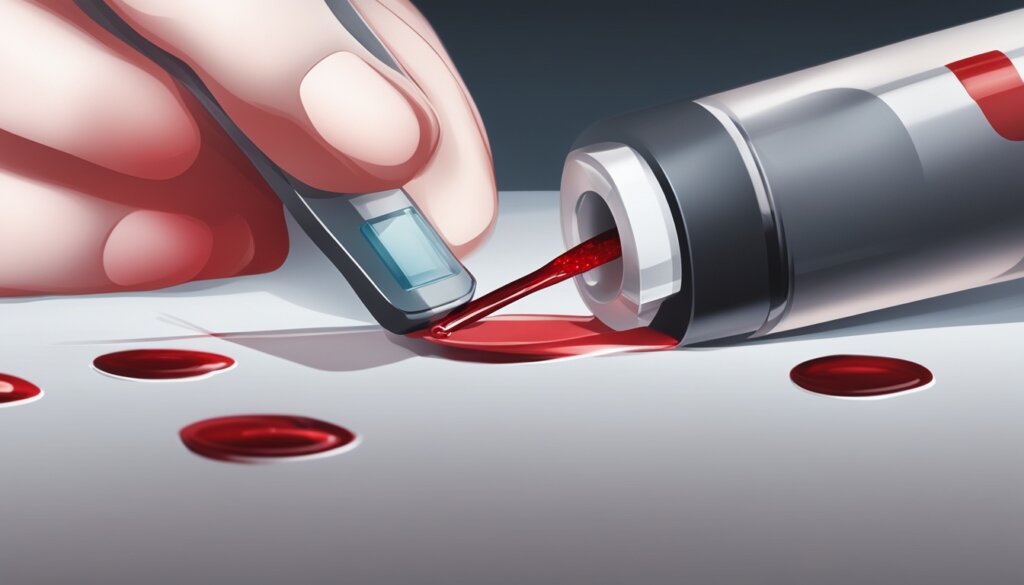
“Regular blood glucose monitoring is essential to correct low levels promptly.”
Treatment for Hypoglycemia Episodes
When you have low blood sugar or hypoglycemia, you need to quickly raise your blood sugar. A good way to do this is by eating 15 to 20 grams of fast-acting carbs. This can be from glucose tablets, fruit juice, soda, or candy.
These carbs get into your blood fast, helping to fix your blood sugar in 15-20 minutes. It’s important to have these carbs ready, especially if you have diabetes. This way, you can treat low blood sugar right away.
Glucagon for Severe Cases
If you’re very sick from low blood sugar and can’t wake up or swallow, you might need glucagon. Glucagon helps your liver release stored glucose, quickly raising your blood sugar. It’s given through an injection or nasal spray by someone who knows how.
Using glucagon fast is very important. It can stop serious problems like seizures, coma, and death. People at risk should talk to their doctors to get a glucagon kit. They should also teach someone else how to use it.
If you keep feeling the signs of low blood sugar, keep eating fast-acting carbs and check your blood sugar again. After your blood sugar is stable, eating a healthy snack or meal can help keep it from dropping again.
“Prompt administration of glucagon is crucial in these life-threatening situations, as it can help prevent complications such as seizures, coma, and even death.”
Prevention Strategies for People with Diabetes
For people with diabetes, it’s key to stop hypoglycemic episodes. A good way is using a continuous glucose monitoring (CGM) system. This device measures glucose levels all the time and alerts you when they get too low. It helps you see patterns and can warn you before your blood sugar drops too much.
Continuous Glucose Monitoring
CGM is a big help for managing diabetes and avoiding low blood sugar. It shows your glucose levels as they change, so you can act fast if they drop. With a CGM, you learn how your body reacts to food and exercise. This helps you keep your blood sugar stable and avoid low levels.
Dietary and Lifestyle Adjustments
Changing what you eat and how you live can also help prevent low blood sugar. Eating the right mix of carbs, proteins, and fats helps keep your blood sugar steady. Checking your blood sugar often, adjusting your meds if needed, and staying active can also help prevent low blood sugar.
Using CGM tech and making healthy food and lifestyle choices can really help people with diabetes. This way, they can stop hypoglycemic episodes and take better care of their health.
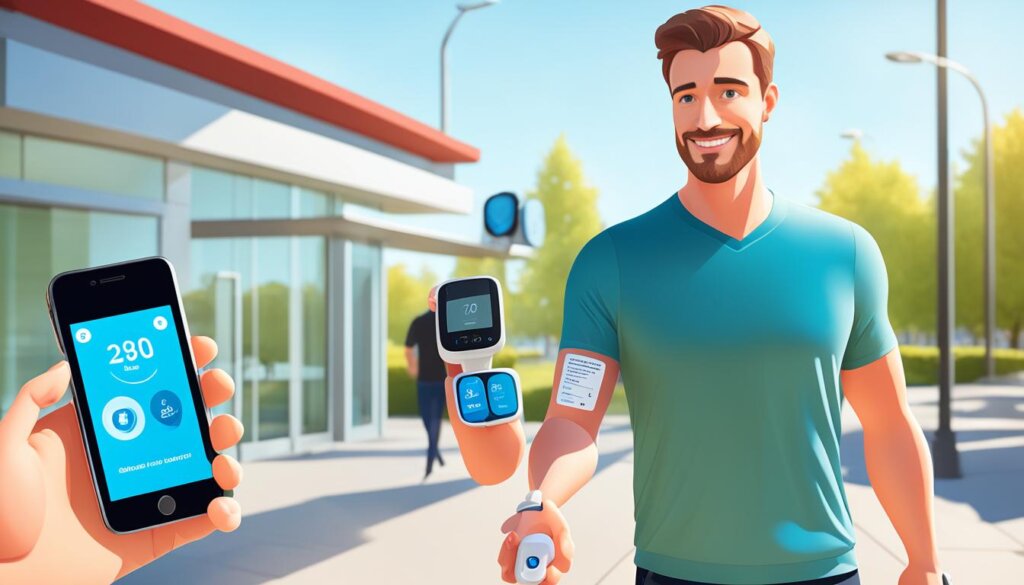
Prevention for Non-Diabetic Hypoglycemia
Hypoglycemia, or low blood sugar, is not just for diabetics. People without diabetes can also have these episodes. To prevent it, focus on what you eat and how you live.
Eat small, frequent meals with carbs, proteins, and healthy fats. This keeps your blood sugar stable. Also, don’t drink too much alcohol, especially on an empty stomach. And, manage any health issues that might cause low blood sugar.
- Reactive hypoglycemia happens within a few hours of eating a meal.
- Fasting hypoglycemia can be related to diseases such as those affecting the liver, heart, or kidneys.
- Reactive hypoglycemia can be caused by conditions such as pre-diabetes, stomach surgery, or rare enzyme deficiencies that hamper food breakdown.
- Fasting hypoglycemia may be triggered by medications like salicylates, sulfa drugs, pentamidine, or quinine.
Pay attention to what you eat and how you live to prevent non-diabetic hypoglycemia. Talk to your doctor about any health issues or medicines that might cause low blood sugar.
“Preventing non-diabetic hypoglycemia is all about understanding your body’s unique needs and making adjustments to your daily routine.”
Be careful and take steps to protect your health. With the right actions, you can avoid the problems of non-diabetic hypoglycemia.
When to Seek Medical Attention
Getting help right away is key when your blood sugar is too low. If you have diabetes and feel very bad, like you’re having seizures or can’t eat carbs to fix it, call for help fast. Quick action can stop serious problems and keep you safe.
If you don’t have diabetes but feel like your blood sugar is low, see a doctor. They can figure out why and help you. Not treating this can cause health issues, so act fast.
Even if it’s not a big deal, seeing a doctor is smart if you have diabetes and keep getting low blood sugar. They can make a plan to help you manage your sugar levels better.
In short, get help if you have bad hypoglycemia, don’t know why your blood sugar is low, or keep getting low levels. Always talk to your doctor for help and advice on managing your condition.
Conclusion
Hypoglycemia, or low blood sugar, is a serious issue that needs quick action. It’s important for everyone to know about its causes, signs, and how to handle it. This knowledge helps keep you healthy and avoids serious problems.
When you have hypoglycemia, you might feel confused or even have seizures. This happens when your blood sugar is very low, less than 50 mg/dL.
Working with your doctor and checking your blood sugar often is key. You can also change your diet and lifestyle to help manage it. Knowing when you might get hypoglycemia helps you act fast to stop it.
This summary gives you the main points on hypoglycemia. It talks about what causes it, what happens, and how to deal with it. By being aware and taking steps, you can keep your health in check and avoid problems. Always listen to your doctor and look after yourself to handle hypoglycemia well.
FAQ
What is hypoglycemia?
Hypoglycemia means your blood sugar is too low, usually less than 70 mg/dL. It’s a big worry for people with diabetes. Their bodies can’t handle insulin and glucose well.
How is hypoglycemia different from hyperglycemia?
Hyperglycemia is when your blood sugar is too high. This often happens in people with diabetes because they don’t make enough insulin or their bodies resist insulin. Hypoglycemia, on the other hand, is when your blood sugar drops too low. It can happen to anyone, with or without diabetes.
What are the early warning signs of hypoglycemia?
Early signs of low blood sugar include shakiness, sweating, feeling weak, getting hungry, feeling dizzy, being confused, and having a fast heartbeat. These signs tell your body you need to fix your low blood sugar.
What are the symptoms of severe hypoglycemia?
Severe low blood sugar can cause seizures, coma, and not responding. These are serious signs that need quick medical help. If not treated, they can harm your organs, brain, and even be deadly.
What are the common causes of hypoglycemia in people with diabetes?
People with diabetes often get low blood sugar from not balancing insulin, food, and activity. Missing or delaying meals, eating too few carbs, or not planning exercise right can throw off your blood sugar balance.
How can hypoglycemia affect pregnant women with diabetes?
Pregnant women with diabetes face a higher risk of low blood sugar, especially early on. Hormonal changes and more sensitive insulin make it hard to keep blood sugar stable, raising the chance of hypoglycemia.
What is nocturnal hypoglycemia?
Nocturnal hypoglycemia is low blood sugar at night. It can happen when your insulin levels drop while you sleep, you’re more active during the day, or you take insulin at the wrong time.
What are the types of non-diabetic hypoglycemia?
Non-diabetic hypoglycemia comes in two types. Reactive hypoglycemia happens after eating and blood sugar drops suddenly. Fasting hypoglycemia occurs when you go too long without eating and your blood sugar falls.
What medications and medical conditions can contribute to hypoglycemia?
Some medicines, like quinine, beta-blockers, and certain antibiotics, can mess with your glucose levels and cause low blood sugar. Serious illnesses like liver disease, kidney failure, severe infections, and heart disease can also affect your blood sugar control.
What is hypoglycemia unawareness?
Hypoglycemia unawareness is when people with diabetes don’t feel the usual signs of low blood sugar anymore. This happens when they’ve had too many low blood sugar episodes, making it hard to notice and treat it.
What are the potential complications of untreated hypoglycemia?
Not treating low blood sugar can lead to seizures, coma, and even death. When your blood sugar is too low, your brain and vital organs don’t get the glucose they need. This can cause confusion, loss of consciousness, and serious health risks.
How can you identify and monitor low blood sugar levels?
Check your blood sugar often, either with finger prick tests or a continuous glucose monitor. This helps spot low levels early. Normal blood sugar is between 70 and 99 mg/dL, and hypoglycemia is below 70 mg/dL.
How is hypoglycemia treated?
To treat low blood sugar, eat fast-acting carbs like glucose tablets, fruit juice, regular soda, or hard candy. In serious cases, where someone can’t wake up or swallow, glucagon may be needed to help the liver release stored glucose and raise blood sugar quickly.
How can people with diabetes prevent hypoglycemic episodes?
People with diabetes can prevent low blood sugar by using a continuous glucose monitor, eating balanced meals, planning meals and snacks with insulin and activity in mind, and checking blood sugar often.
How can non-diabetic individuals prevent hypoglycemia?
Non-diabetics can prevent low blood sugar by eating small, frequent meals with carbs, proteins, and fats. Avoid too much alcohol, especially without food, and manage any health issues that might cause low blood sugar.
When should you seek medical attention for hypoglycemia?
Get medical help right away if you have hypoglycemia symptoms and don’t have diabetes, or if you have diabetes and it’s severe, like seizures, losing consciousness, or not responding to quick carbs.
